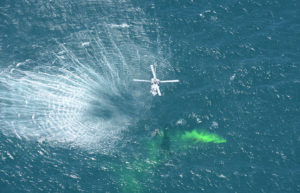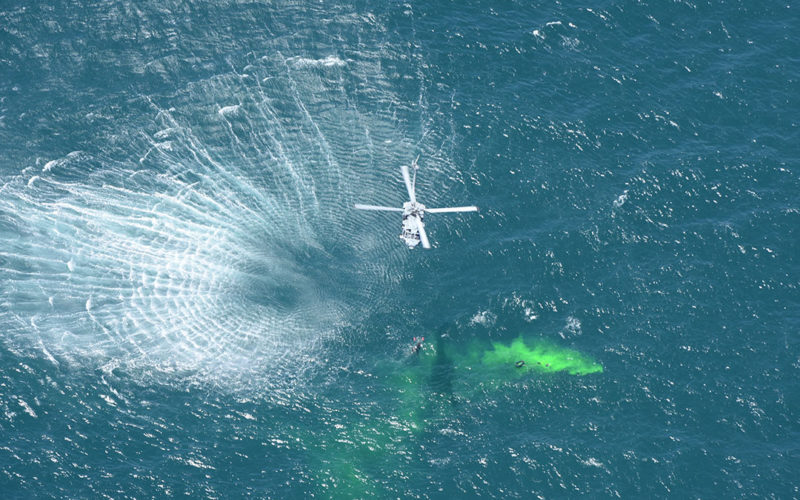
The U.S. Coast Guard is experiencing a gradual erosion of proficiency at all levels of the search and rescue (SAR) chain of command, including core leadership positions at district and sector commands. The service must re-dedicate itself toward ensuring key personnel have the training and experience to lead this critical life-saving mission.
As a signatory to the International Search and Rescue (SAR) Convention of 1979, the U.S. Coast Guard is obligated to “ensure that necessary arrangements are made for the provision of adequate search and rescue services for persons in distress at sea.” To assist with meeting this obligation, the International Aeronautical and Maritime Search and Rescue Manuals Volumes I through III were developed. These manuals, along with the U.S. National SAR Supplement and the Coast Guard SAR Addendum, serve as foundational guidance documents for the Coast Guard’s maritime search and rescue mission.
As described in these documents, the SAR Mission Coordinator (SMC) is the “person assigned to carry out all aspects of planning, coordinating and managing the response to a SAR incident.” A role normally held by more senior active-duty members and civilians in the SAR chain of command, an SMC is assigned to every search and rescue case. This position is not part of the command center watch team to maintain an unbiased, independent perspective.
Maritime search and rescue is one of the service’s highest priority missions. As such, it makes sense to institute the most rigorous, standardized field training and qualification process for any individual pursuing this designation. However, the Coast Guard has not created a formal, on-the-job qualification standard. Some forward-thinking district and sector commands have created their own local training programs. But not all of them. Many commands only require the bare minimum of on-the-job training. For some, this can be as little as a few weeks of experience managing a handful of search and rescue cases before they earn the SMC designation.
As a result of this non-standardized approach, there is a broad range of competency across the service in terms of knowledge, experience, and judgment among the dozens of qualified SMCs nationwide.
Such inexperience and lack of proficiency can lead to mismanagement, poor decision-making, and the inefficient use of search and rescue assets. Those with less experience may overcompensate and search for hours, or even days, longer than necessary and ignore search planning software outputs as well as other measures of search effectiveness. They might allow themselves to be disproportionately influenced by less important or even irrelevant factors. Approaching major search and rescue cases in this conservative and perceived low-risk manner is not a reduction in risk. It is a transfer of risk, from an individual or unit to the crews of assigned search assets, including aircraft, cutters and/or small boats.
Searching much longer than necessary, without clear articulation of the potential gain in terms of probability of success, increases the risk to Coast Guard crews searching in often dangerous and unpredictable maritime conditions. Quite simply, this should never occur under the supervision of a qualified SMC.
Deterioration of District
Command SAR Proficiency
Coast Guard district commands, which oversee mission areas and activities across multiple states and large offshore areas of responsibility, represent the top of the search and rescue chain of command. District commanders serve as SAR coordinators, and senior staff fill critical leadership roles, including SMC for district search and rescue cases. They also exercise authority to suspend search and rescue operations during major cases.
District Commands perform critical roles: They maintain SAR program oversight, perform the essential function of “quality control,” and serve as the last line of defense for major district and sector search and rescue cases. To support these activities, district command centers facilitate efficient coordination of all SAR activities within their respective areas of responsibility.
For decades, each District Command had an Office of Search and Rescue (OSRs) that housed dedicated staff officers and civilians. These personnel provided SAR subject matter expertise and program oversight across their respective rescue regions within a district area of responsibility.
Following the creation of Sector Commands, Coast Guard Headquarters eliminated District OSRs and created a new position, the district chief of incident management. These new roles, which are usually assigned to senior Coast Guard aviators at the rank of captain, oversee Coast Guard Air Stations, as well as several core missions and programs, including search and rescue, command center operations, incident management, and marine environmental response. For many of these senior officers, as well as other individuals in district search and rescue leadership roles, this is their first exposure to planning, command center operations, search and rescue mission coordination and, ultimately, decisions to suspend an ongoing search.
How To Restore Coast Guard SAR Proficiency
At Coast Guard District and Sector commands, Master SAR Controller civilian positions were created, for the purpose of serving as the lead search and rescue subject matter experts. While this decision helped bridge knowledge and experience gaps, persistent service-wide proficiency issues among senior leadership remain.
Any individual who fills these key leadership roles should have adequate command center qualifications and SAR planning experience prior to beginning their training as an SMC. In the same context, anyone with authority to suspend a search should have the relevant experience needed to make these difficult decisions. Furthermore, sufficient search and rescue planning, mission coordination, and experience determining when to suspend an active search should be prerequisites for assignment to key senior leadership and program management positions.
It takes years of experience to attain the minimum level of proficiency to oversee the Coast Guard’s SAR mission and perform the carefully orchestrated roles involved in this effort. The Coast Guard can bring the mission back to prominence as a core life-saving mission, instead of treating it like a collateral duty. The service should expect nothing less than the most highly trained and experienced search and rescue practitioners. Any person in distress at sea, hoping that the Coast Guard will locate, rescue, and reunite them with their loved ones, deserves nothing less. •
Drew Casey retired from the U.S. Coast Guard in June 2021. A legacy Marine Safety Officer and career Response-Ashore Officer, he has several years of SAR Mission Coordinator and Active Search Suspension Authority experience on the Gulf Coast. He served as the Lead Project Officer for the Deepwater Horizon Oil Spill Incident Specific Preparedness Review (ISPR).

